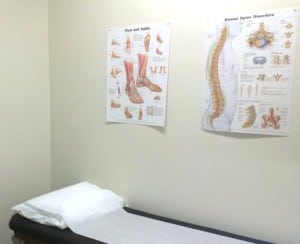![]()
Do you want to generate increased revenue without spending time and money on a marketing campaign? You might be able to do exactly that by just looking at your calendar.
The main goal of marketing is to promote your services and generate increased revenue, right? Well, we believe sometimes marketing strategy also involves taking a look at the way your practice operates, asking why things are done the way they are and adjusting them for maximum efficiency.
If time is money, then it stands to reason one way to generate increased revenue is by looking at your schedule. Rather than reinventing the wheel and spending thousands on advertising and marketing, take a look at your day-to-day operations and re-evaluate how time is managed in your office.
Here’s a few tips to help you get started.
Analyze Your Patient Mix
Determine if your patients are mostly fee-for-service, patients who pay for services one-by-one, or capitated, patients who have a set fee that has been paid for services rendered. Your schedule should reflect the percentage of fee-for-service patients versus capitated patients. For example, if you have 60 percent fee-for-service patients and 40 percent capitated patients, your schedule should fill your schedule with 60 percent fee-for-service patients and 40 percent capitated patients.
Schedule capitated patients in blocked capitated spaces so that you still have times available for same day and extended hours appointments. Not leaving these open may cause fee-for-service patients to go somewhere else if they can’t get into your office promptly.
Categorize Your Visits
 Some visits take longer than others, depending on what type of visit it is. For example, a new patient appointment often takes longer than an established patient appointment. Determine what types of visits you have, what resources they need and how much time each type of visit takes.
Some visits take longer than others, depending on what type of visit it is. For example, a new patient appointment often takes longer than an established patient appointment. Determine what types of visits you have, what resources they need and how much time each type of visit takes.
After determining your types of visits, schedule and place appointments at times of the day that make the most sense. This may mean that new patients visits are the end of the day and acute patients are at the beginning of the day. Scheduling by resource will also allow you to book more than one patient for the same or overlapping time slots – more on that below.
Consider Double-booking
One in three patients won’t show up to an appointment, according to Medicaid. Look at your schedule and try to identify patients who are likely to cancel or not show up. Double-book those appointments to help generate increased revenue in case one doesn’t show.
Create a Cancellation or No-show Fee
If you haven’t already, implement a fee for last-minute cancellations and no shows. This minimizes the impact that these holes can have on your practice.
Most cancellation policies require that patients cancel before 24 hours of their appointment. For surgeries, the cancellation notice time may be longer. If a patient does not cancel their appointment before the policy time, they most pay a late cancellation fee.
Your office can collect this fee by creating a cancellation code and then bill the patient using an electronic statement. When a patient doesn’t show up or cancels an appointment, process a patient statement and have the patient pay online by a credit card. When patients pay online, it can speed up the turnaround on payments.
When you implement a cancellation policy, communicate it clearly with your patients (this is where traditional marketing comes into play – especially if this is a new policy). It should be a document that a new patient signs. After a patient signs the document, it should be discussed with patients when follow-up appointments and surgeries are booked and when reminder calls or emails go out to patients.
Keep Your Practice on Schedule
 While this may be a challenge, it is important to stay on schedule. Staying on schedule can be hard when physicians get sidetracked with refill requests, patients take up more time than the are allotted or the front desk is short staffed. When these things happen, your practice may become bottlenecked for the rest of the day.
While this may be a challenge, it is important to stay on schedule. Staying on schedule can be hard when physicians get sidetracked with refill requests, patients take up more time than the are allotted or the front desk is short staffed. When these things happen, your practice may become bottlenecked for the rest of the day.
To help keep your office on track:
- Set guidelines with the staff about interrupting physicians unless it’s a true emergency. For non-emergencies such as refilling prescriptions, set aside a specified time for physicians to address these items.
- Prioritize tasks for the staff. When things get busy, this can help the staff know which tasks they should focus on.
- Analyze your time management. Determine if you scheduling is inefficient or your longest visits are at the wrong time of the day. Use a task management tool to help staff prioritize and stay focused.
What Did We Miss?
Do you have other ideas or tips to help generate increased revenue by re-evaluating your clinic schedule? Leave a comment and let us know what works for you.